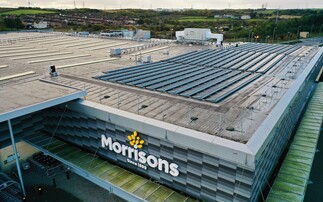Few of the Sustainable Development Goals are more challenging than SDG11's pursuit of truly sustainable cities, but businesses have a key role to play in driving progress
While all 17 of the UN's Sustainable Development Goals are ambitious, you can make a strong case that SDG11 is among the most stretching of goals. In aiming to making cities "inclusive, safe, resilient and sustainable", it sets itself a challenge that gets bigger with each passing day. Take the population of Tanzania's Dar Es Salaam, for example, which is growing by half a million people every year. Currently a metropolis of around 4.5 million, by 2052 it is expected to surpass 21 million, matching the contemporary population of Beijing. Such cases illustrate how concerted action helped reduce the proportion of people living in slums by 20 per cent between 2000 and 2014, but nevertheless the total number of people living in such conditions went up by almost 80 million.
Still, with cities responsible for about 80 per cent of global GDP, there's huge scope for businesses to contribute to progress towards the sustainable cities goal. "About a third of companies involved in the UN Global Compact are taking action on SDG11," says Patricia Purcell, a senior adviser to the body's Cities Programme. Here we look at what businesses can do to most effectively engage with the big challenges posed by SDG11.
1. Don't approach issues in isolation
It is a fact planners learn the hard way: when shaping policy for cities, it's not possible to target one issue in isolation. "Siloed delivery mechanisms are often the cause of failure at a local level," warns William Cobbett at the Cities Alliance. "You have to remember you're dealing with the one living organism that is the city."
This inherent interconnectedness also has to be considered when making business decisions. For example, the rapid expansion of private bike share operators in cities in the US, Europe, and China is helping tackle air pollution and carbon emissions. But as the bikes have gone increasingly dockless, they have resulted in significant unintended consequences, as discarded bikes have blocked pavements, shops, and other amenities.
Californian firm Lime Bikes has taken a proactive approach to tackling the problem. "We do regular community outreach to explain what is good versus bad parking," says Jaanaki Momaya, UK Managing Director at Lime UK. "We want to fit in with urban environment and make sure our bikes look good from the perspective of the general public."
More broadly, any business decision to try and enhance urban environments needs to be cognisant of the infrastructure impacts that will result. Plans to incentivise staff to use public transport or deploy zero emission fleets have obvious benefits, but businesses also need to ensure they are working with city authorities so that the necessary capacity and charging infrastructure is in place. In a city, nothing happens in isolation.
2. Know your impacts
Of course, being aware of the potential impacts of a project is rarely simple - particularly in as complex an environment as a city. Accordingly, developing tools and techniques to measure and communicate how a project could impact the communities in which it is being delivered is critical, as Peter van de Wijs from the Global Reporting Initiative (GRI) explains.
"The better a company understands how its activities impact the environment in which it operates, the more informed its investment decisions will be," he says. "Simultaneously investors are demanding better information about the projects they invest in, so it helps unlock capital, too."
Van de Wijs highlights how construction firms working in cities to the GRI's Standard 203, which provides a framework for assessing the impacts of major infrastructure projects. It asks firms to both disclose expected impacts on communities and to describe the work that's been undertaken to reach this understanding, such as a community needs assessment.
More broadly, understanding business impacts also helps firms identify the many co-benefits that can be unlocked by harnessing the inevitable interconnectedness of a city. Incorporating green spaces in new developments, for example, can help bolster climate resilience, improve biodiversity, and enhance mental health, well-being, and productivity amongst employees. Understanding all these inter-related benefits can often strengthen the investment case for green development.
3. In developing world cities, look for opportunities to leapfrog
The biggest challenges within SDG11 inevitably lie in developing world cities. Here, limited capacity on the part of local government, and the extent of social exclusion experienced by a high proportion of urban residents, create significant barriers for sustainable development. As Cristina Gamboa from the World Green Business Council asks: "many of these people don't even have access to a banking record, so how can you make them pay for a home?"
On the other hand, developing world cities have an advantage in that they can leapfrog stages of development, or particular technologies, which were once integral to urban development, but that are now redundant. Telecommunications is the most obvious example: there's simply no need to build landlines when everyone has a cellphone and mobile network coverage. Similarly, smart phones are streamlining financial services, with apps such as M-Pesa in east Africa and WePay in China moving millions away from using cash.
There are even opportunities to leapfrog some essential infrastructure, such as energy and water, says Clinton Andrews, a professor of urban planning at Rutgers University.
"You can rely more heavily on distributed energy systems, so that you can serve microgrids with district energy while waiting for the overall grid to assemble itself," he says. "And there have been advances in small-scale water treatment, so you don't necessarily need giant water treatment plants." This opens the way to relying on lots of smaller facilities, which are easier to align with the uneven growth expectations of developing world cities.
Huge commercial opportunities come with such sustainable development paths, offering businesses to open up massive new markets while also playing a critical role in delivering on SDG11. Mastering the leapfrog ultimately holds the key to both SDG11 and virtually every other Sustainable Development Goal. Without the fast-tracked adoption of clean technologies across the world's emerging mega-cities decarbonisation and sustainable development is simply impossible. And it is ultimately the business community, in conjunction with governments, which will determine whether a new 21st century development path can be forged.








